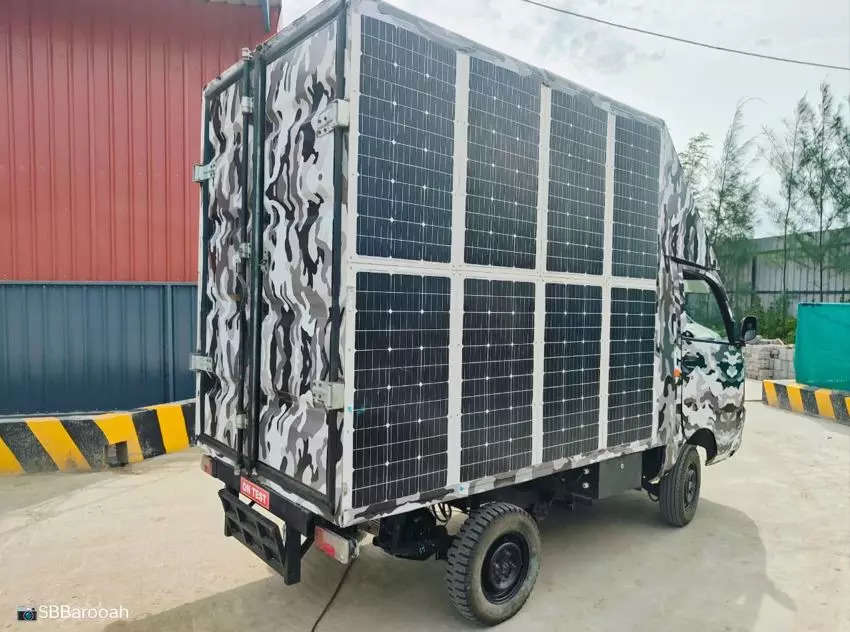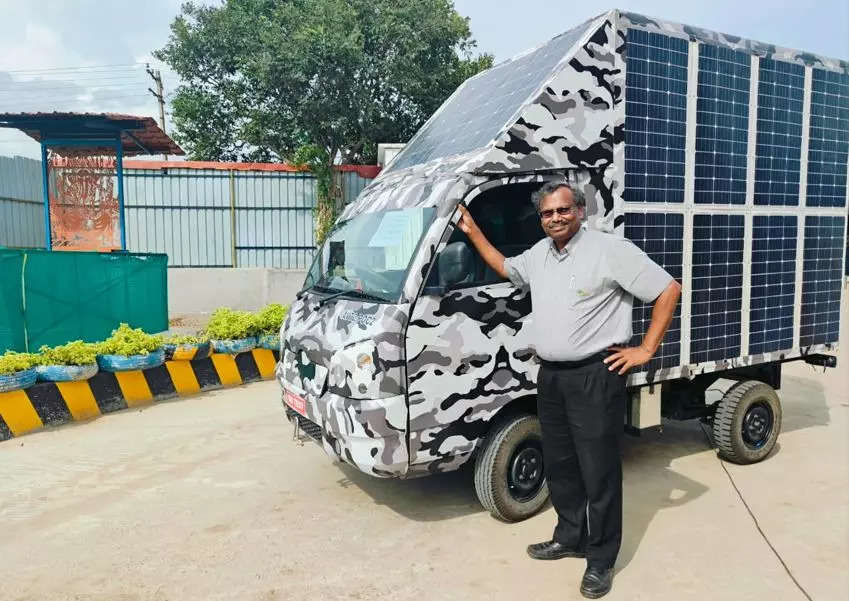
Technologists are known for their restless pursuit of innovation, and technopreneurs even more so. Bala Pachyappa, a key player in India’s electric vehicle (EV) space and former CTO of Ampere Vehicles, is at it again. His latest venture introduces an exciting new concept in the EV world—Body as a Battery (BaaB). This innovative approach promises to redefine electric vehicle efficiency, especially in the commercial sector.Axrad Renewpower Agri Machines (ARAM), a Coimbatore-based startup, has unveiled a prototype of its self-charging electric light commercial vehicle (LCV), code-named ACV. This vehicle introduces groundbreaking technology, including the Body as a Battery concept, which integrates solar panels into the vehicle’s body to generate power, reducing reliance on traditional battery charging methods.
Key features of ACV
Sodium-ion battery: The ACV uses a 72V/200Ah sodium-ion battery with a 5C continuous discharge rate and a 14.4 kWh capacity, delivering a range of 120 km per charge.
Solar power efficiency: Utilising solar panels as part of the vehicle body, the ACV can generate up to 9kWh of energy in just 6 hours of sunlight, meeting over 50% of the vehicle’s daily energy needs.
Lightweight construction: By using composite materials, the vehicle weighs 90 kg less than comparable models, enhancing efficiency.
Performance: The vehicle has a payload capacity of 800 kg, a top speed of 45 km/h, and regenerative braking for enhanced energy conservation.
Charging flexibility: The ACV can be fully charged via AC in under 4 hours, and fast charging provides 60 km of range in just 20 minutes.

BaaB: Body as a Battery
Bala Pachyappa’s BaaB concept leverages solar panels on the vehicle’s exterior to act as a supplemental energy source, cutting down the need for frequent external charging. This innovation allows the vehicle to generate 41-62% of its daily energy requirements from sunlight, significantly reducing operational costs.
The ACV’s solar panel system works on both the top and sides of the load container, contributing up to 60.76% of the energy required for daily operations. This not only cuts down charging times but also increases the overall efficiency of the vehicle. The system effectively reduces the battery load, extending the vehicle’s range and lifespan.
Compared to conventional ICE LCVs like the Tata Ace, the ACV offers a INR 0.40/km operating cost, compared to INR 1.23/km for other electric LCVs and INR 5.15/km for ICE models. These savings translate to significant annual cost reductions of INR 1.75 lakh per vehicle for businesses that operate daily routes of 120 km.
Future plans and homologation process
ARAM is targeting mid-2025 for homologation and plans to release the ACV to pilot customers by Q4 2025. The company is in discussions with suppliers for long-term agreements and is focused on in-house production of critical components, including the sodium batteries and the solar-panel-integrated body.
Bala Pachyappa and his team at ARAM are not just pushing the boundaries of EV technology but are also setting the stage for the next phase in electric commercial vehicle evolution. With the ACV and its Body as a Battery concept, they are tackling two critical issues in EV adoption—charging infrastructure and operational costs—head-on.

















